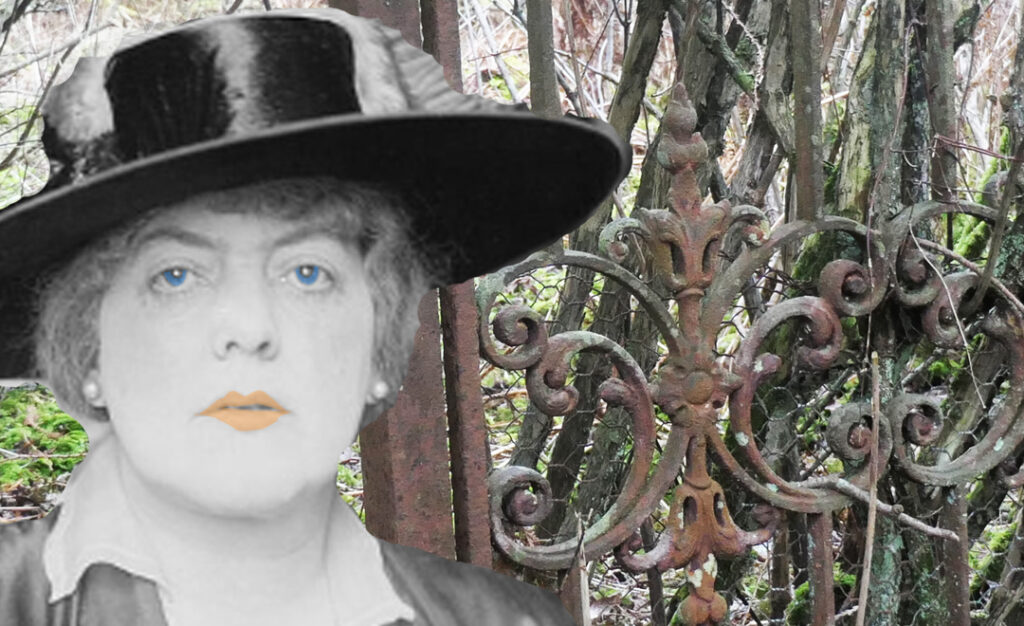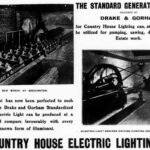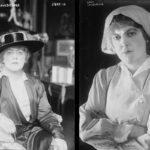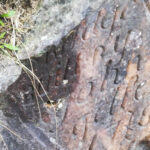In about 1900, work began on construction of an extravagant new country house nestled in the wooded valley of the Glengonnar Water, a little to the south of Abington. The grounds of the house were laid out to showcase the natural beauty of the glen, and for enjoyment of the wealthy individuals who were house guests of Sir Edward and Lady Colebrooke. Glengonnar House had a short life, and was demolished shortly after the second war, leaving gardens that were soon reclaimed by nature.
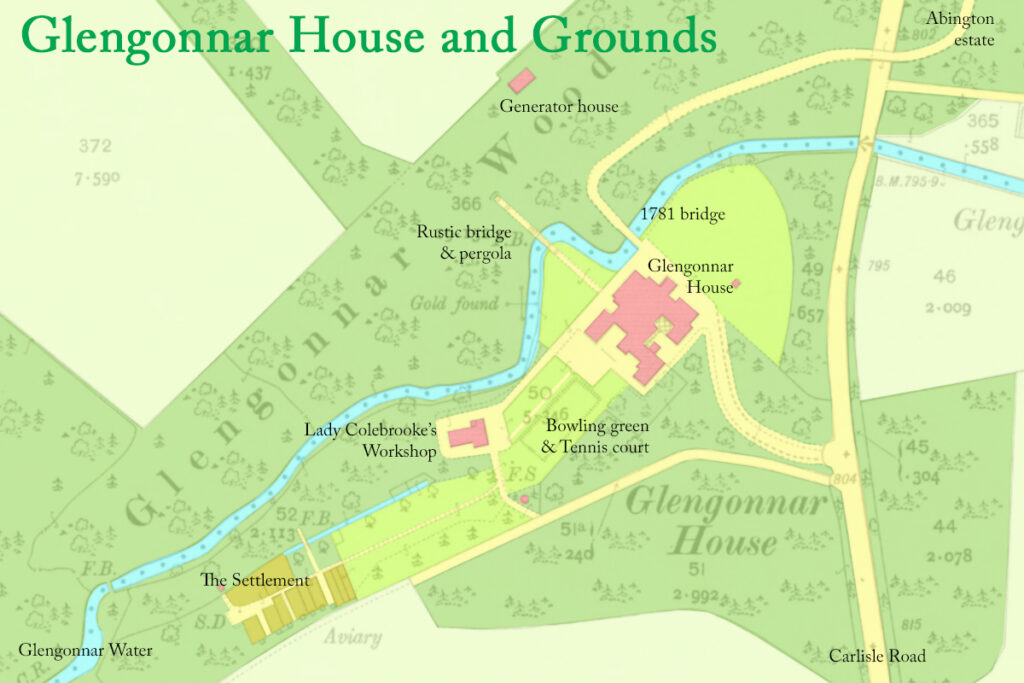
Beneath trees and scrub, many of the walls and earthworks of the garden still survive, although it is difficult to make much sense of them. We’ve found no plans or detailed descriptions of the garden, however the basic layout is shown on an OS map, surveyed in 1909, and a good number of postcards exist showing Glengonnar in its Edwardian heyday. We’ve tried to bring this evidence together to create a simple plan and identify the locations from where the postcard images were taken. However, many mysteries remain.
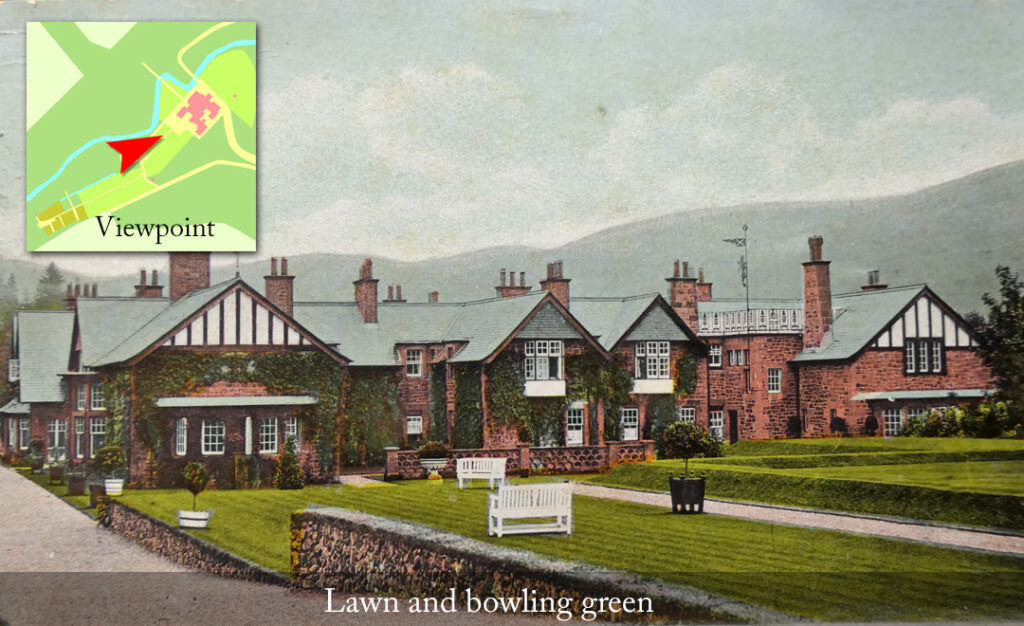
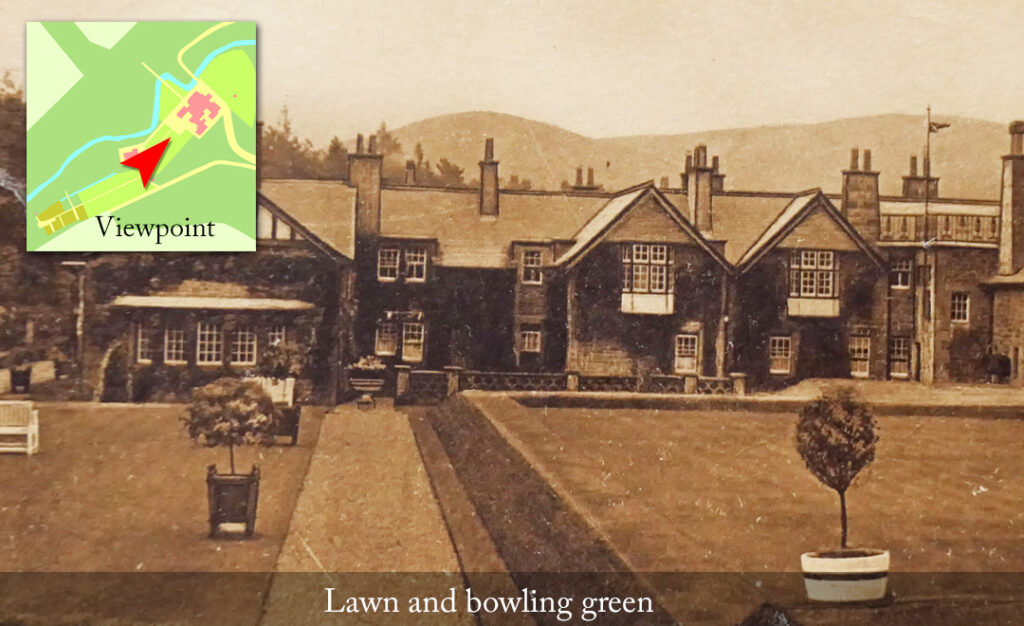
A fine lawn ran between the house and Lady Colebrooke’s workshop – a weird and wonderful building, thatched in heather, that served both for Lady C’s creative furniture-making and as a base for garden parties and summer teas. Postcards show potted shrubs and other decorative features set out around the margins of the lawn, and also along each side of the creeper-clad country house. A manicured green surrounded by a low bank is pictured uphill from the main lawn, presumably where guests might enjoy bowling or croquet. Documents also refer to a tennis court. Downhill from the main lawn, a further lawn extended within a bend of a burn, bordered by flower beds and shrubbery.
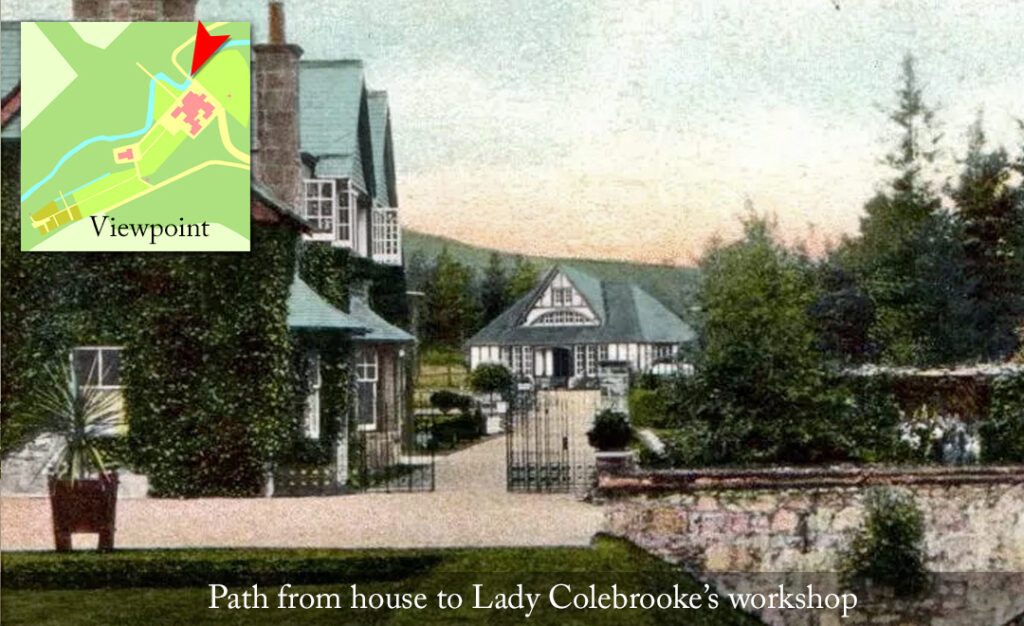
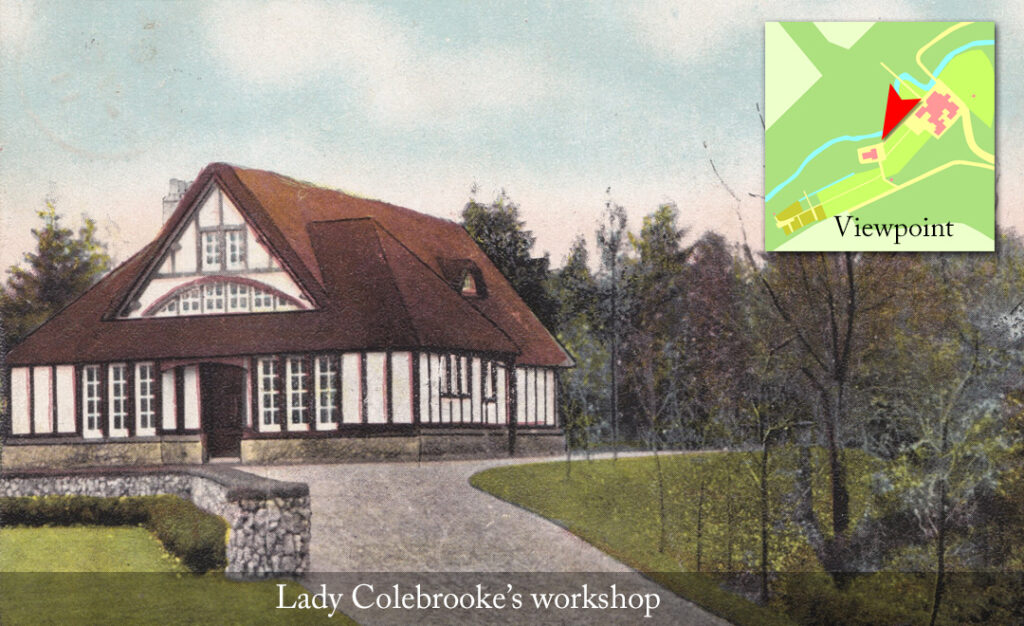
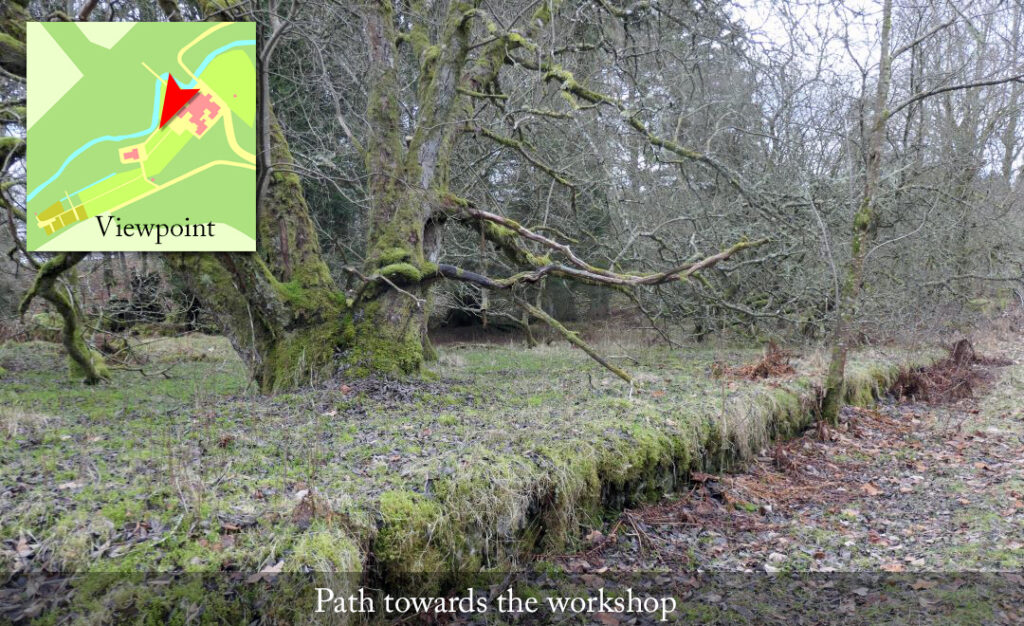
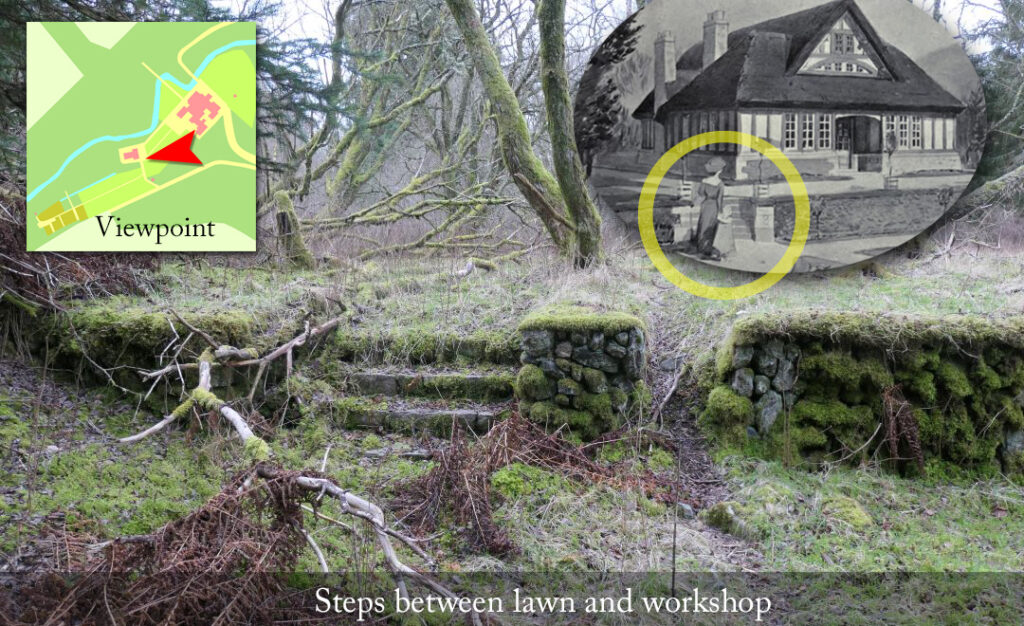
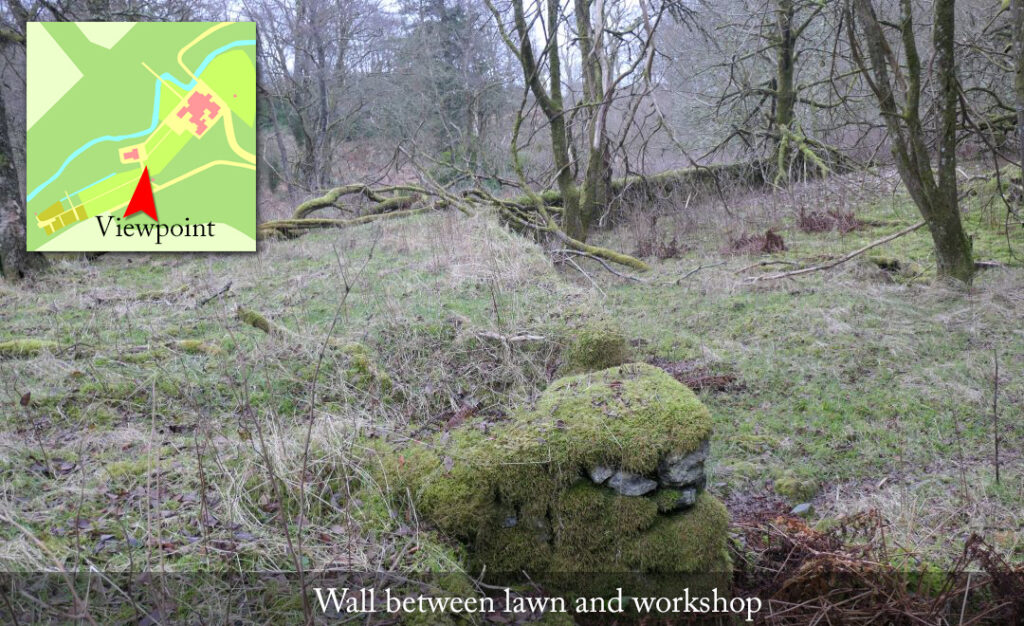
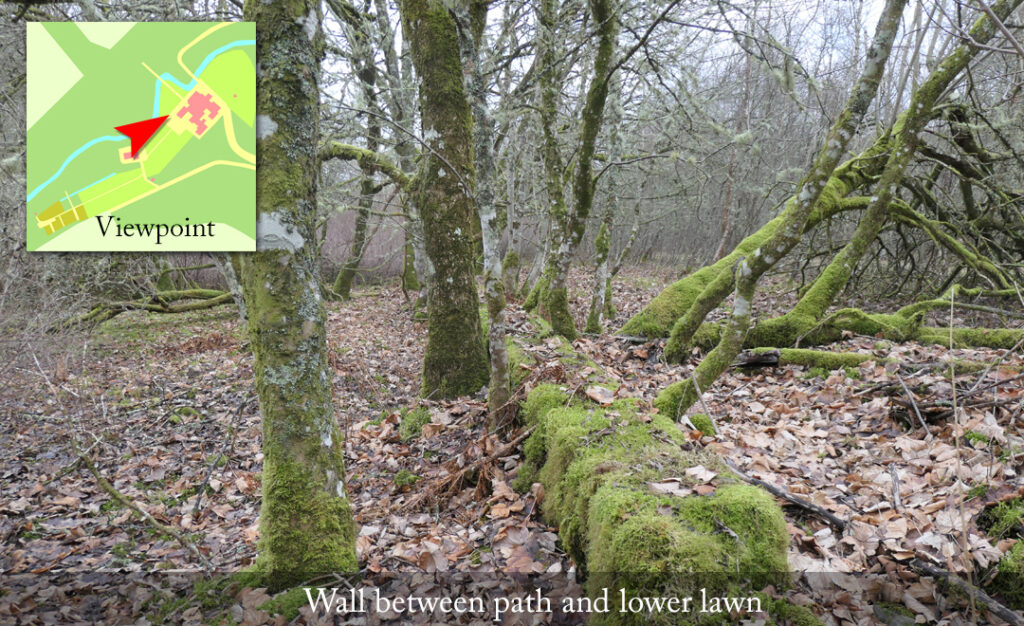
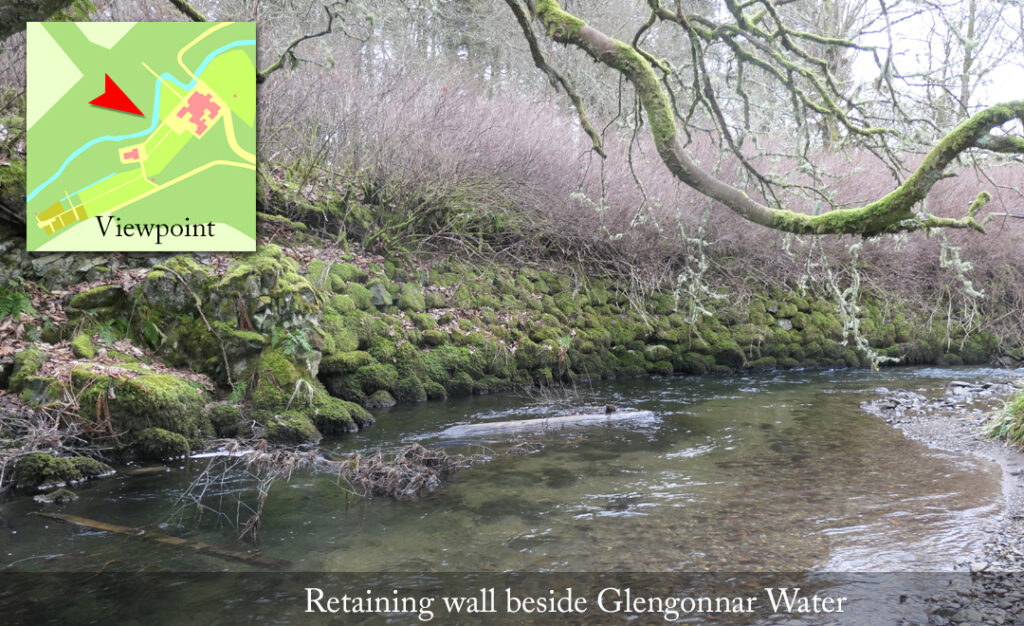
One of the most puzzling features of the garden is the “rustic walk” that ran in a straight line from the house across this lower lawn (where it passed beneath shrub-clad pergolas), crossing the burn on a thatched “rustic bridge” then began to climb on the other bank to an intriguing gazebo set against the side of the hill. Postcards suggest this little structure consisted of four circular stone pillars supporting a square heather thatched roof. Today, almost hidden among rough grass, the top of one circular and one rectangular pillar peek through the surface of the hillside, linked by a masonry lintel. It might be that the hillside has slipped or the area has been deliberately buried – or else that these were addition pillars and that the path continued into the hillside to form a sort of grotto? The symbol on the OS map suggests this could be the case, however there’s no hint of any such feature in any available documents. A little archaeology might help solve the mystery – perhaps a grotto survives buried beneath the soil?
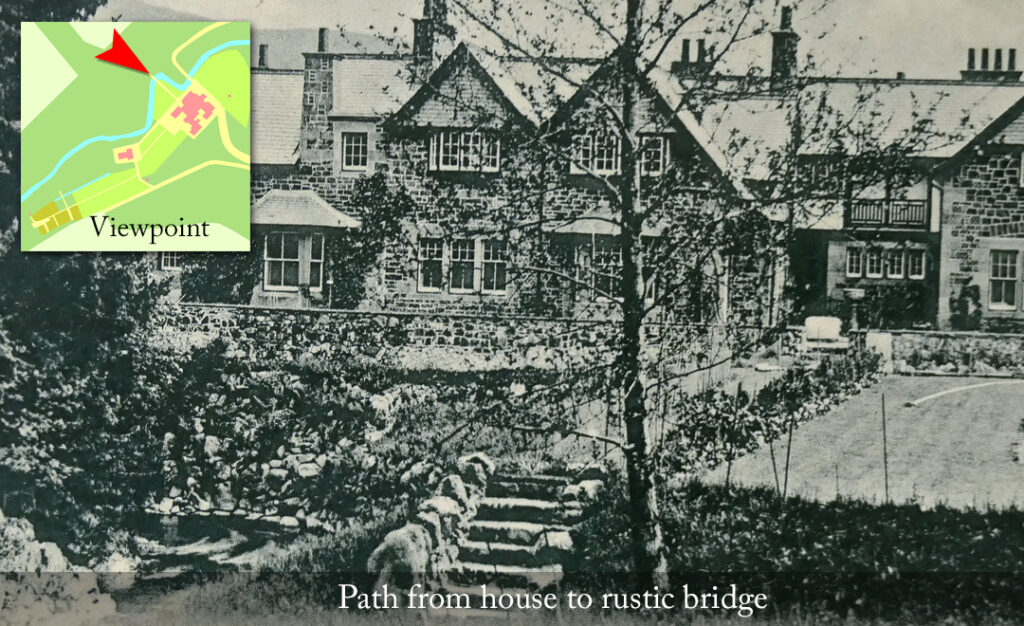
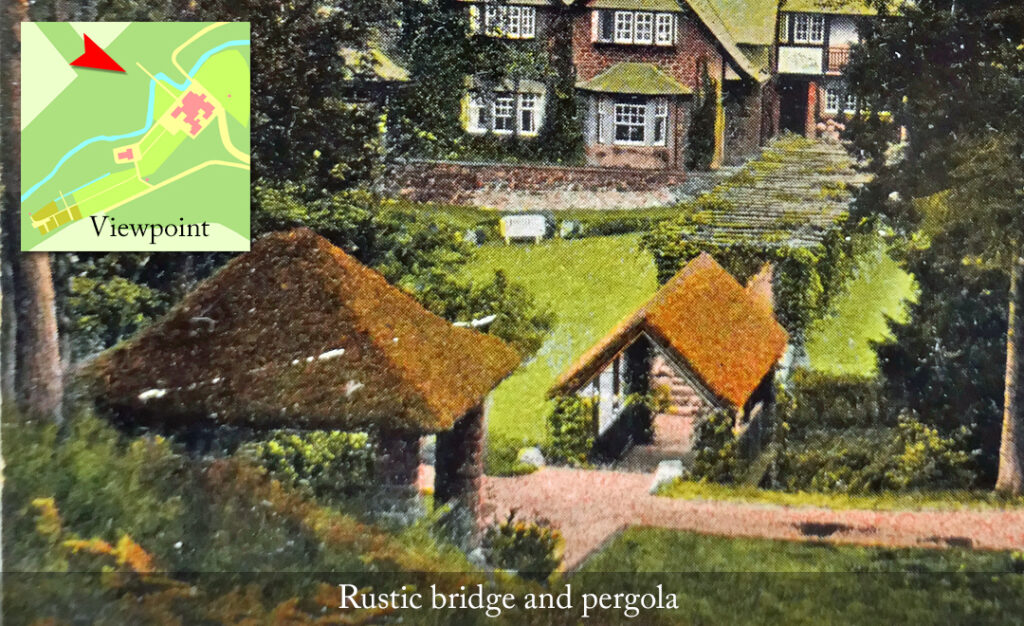
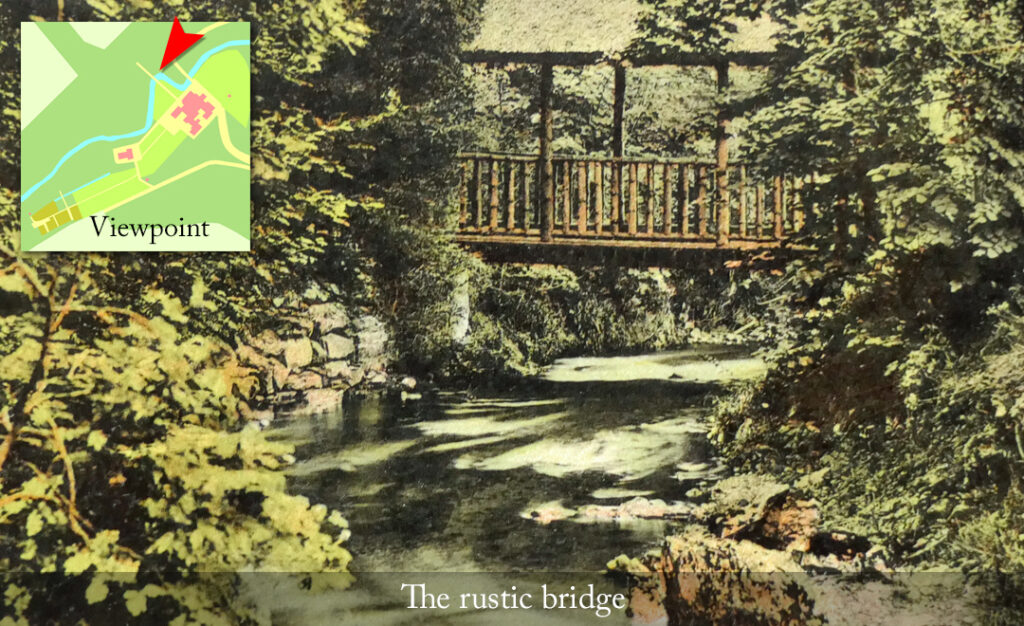
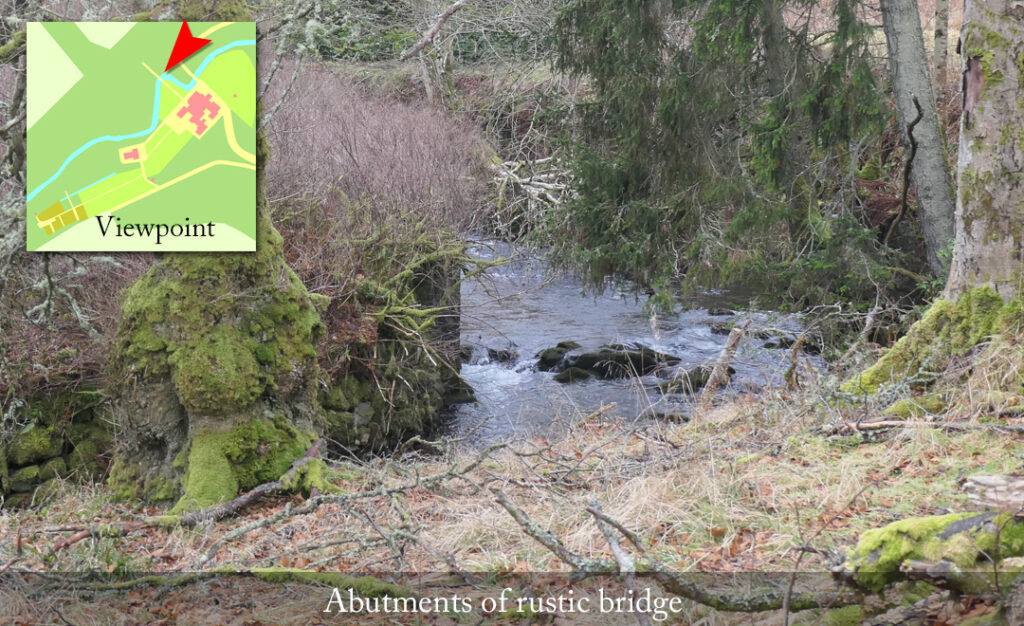
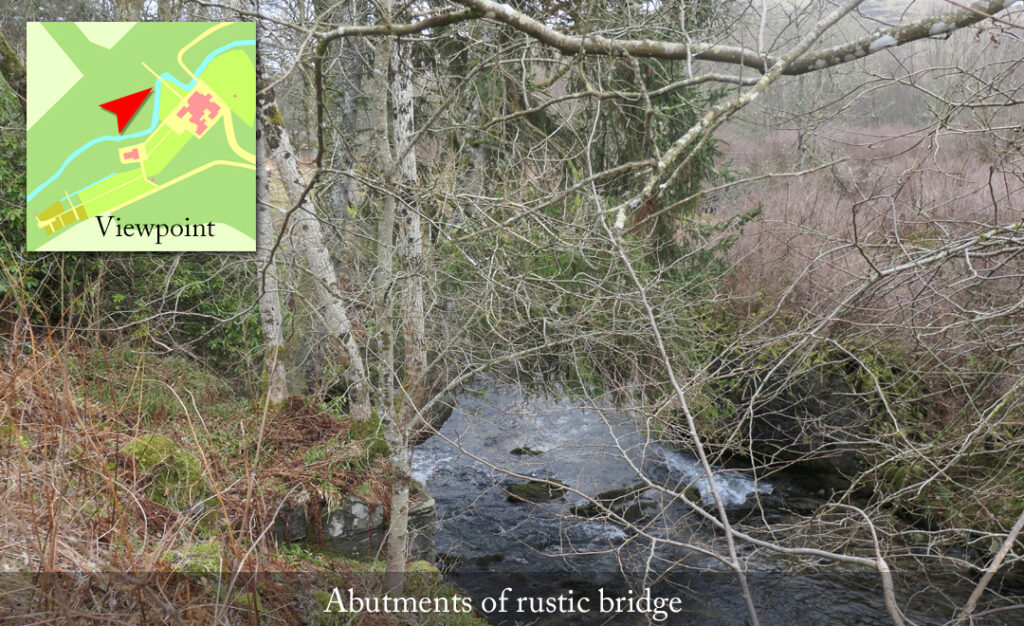
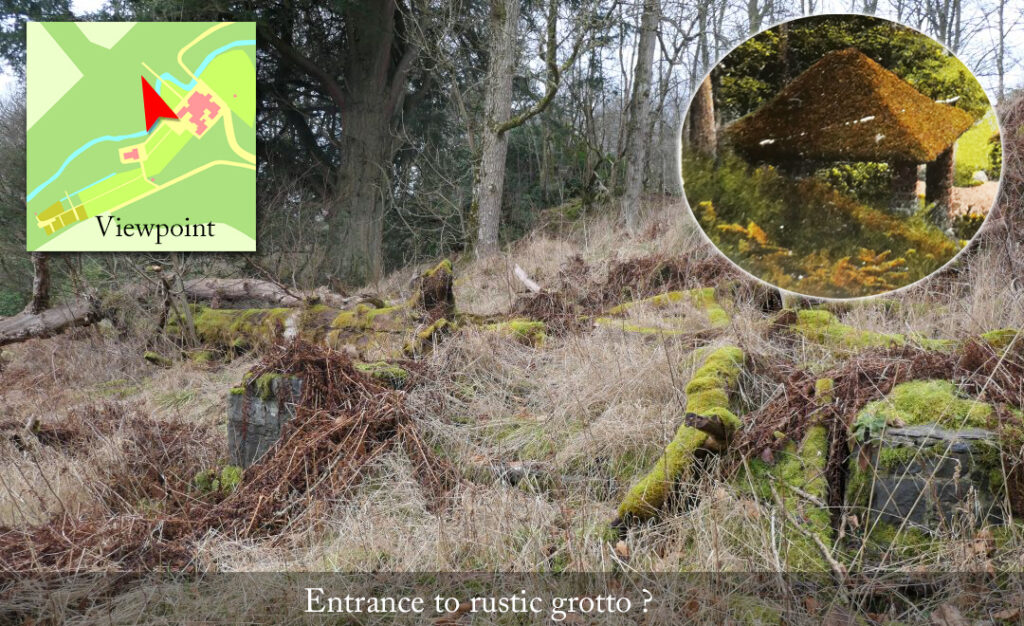
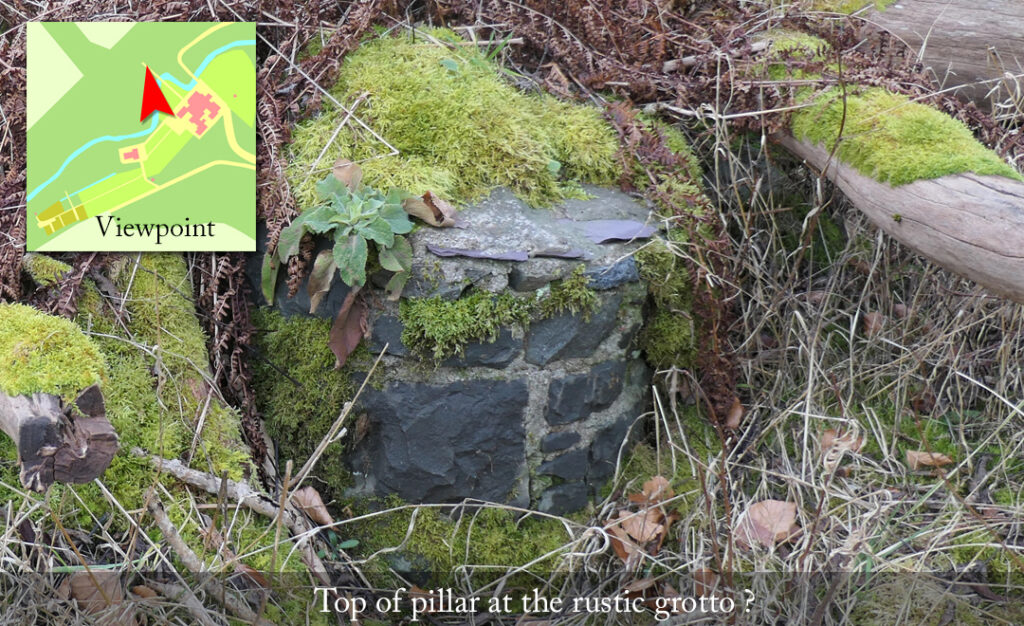
Equally puzzling is “The Settlement”, an area of neat little animal enclosures, each with attractive white-painted gates, at a site a little up the glen from the Lady C’s workshop. Our postcard shows that the area included a couple of elegant dovecotes and an enclosure with three large white rabbits. Lady C’s children were aged 6, 8, and 10 years in 1900 when the house was being planned, so it might be that this pets corner was intended as no more than an entertainment for her children and other young members of her family?
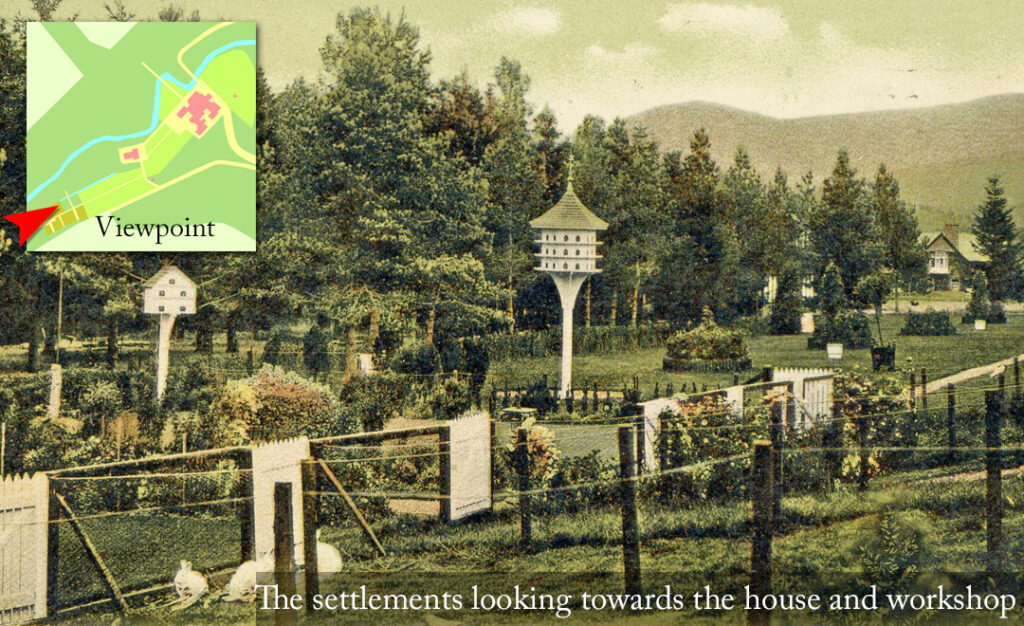
Nearby the OS map shows features (which are difficult to interpret) along the course of a lade that served a woollen mill which was demolished to make way for Glengonnar House. It’s unclear whether it carried water at the time the map was surveyed, however a substantial pond now exists near this site. Close to this area, further changes have occurred with the installation of a pipeline across the glen. The two large pipes that now cross the burn perhaps carry water from the Daer reservoir and would have been installed in the 1950’s.
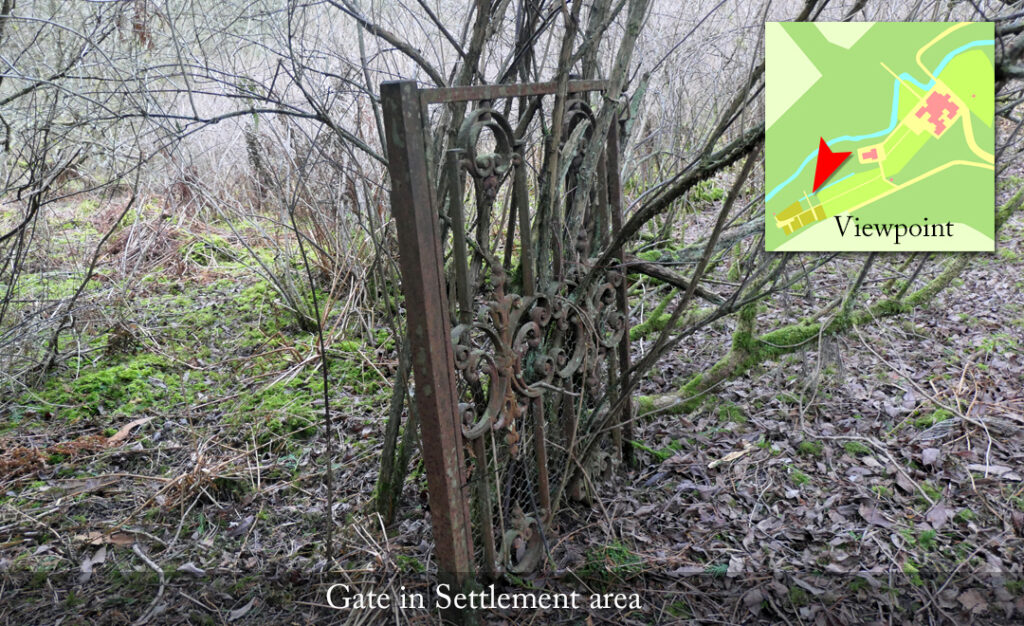
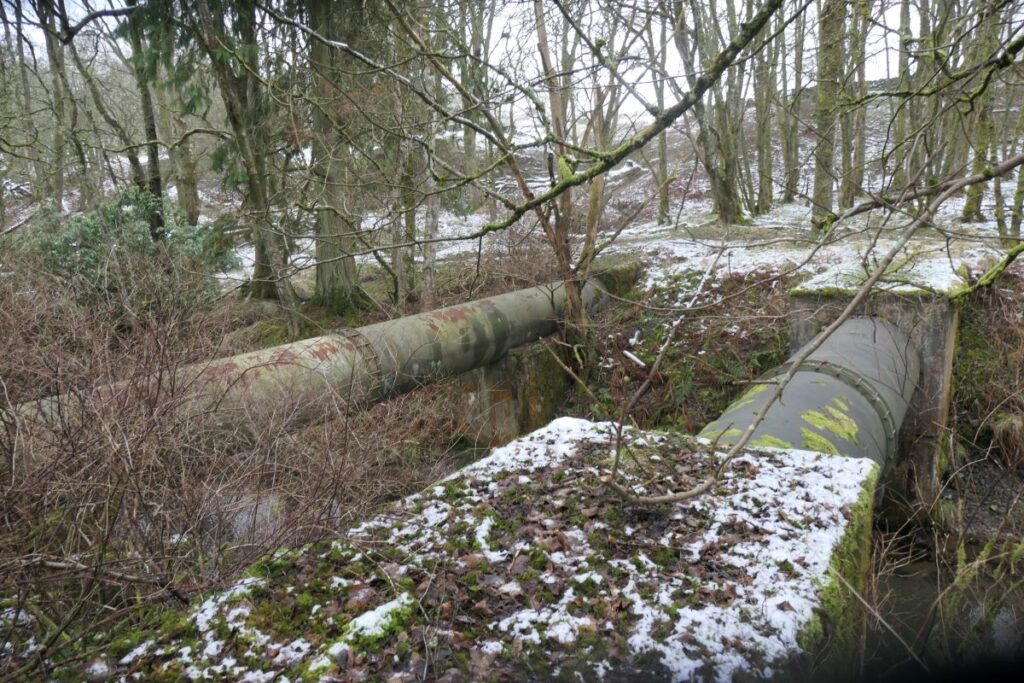
Some of the ornamental shrubs shown on the postcards still survive as impressive trees. An elegant cast iron gate remains hidden in undergrowth beneath one towering cypress, seemingly a relic of Glengonnar’s golden age when fine Edwardian ladies and gentlemen might enjoy an evening stroll through the shrubbery.
Robin Chesters, 1st February 2025
Unless otherwise stated, all text, images, and other media content are protected under copyright. If you wish to share any content featured on Clydesdale's Heritage, please get in touch to request permission.
